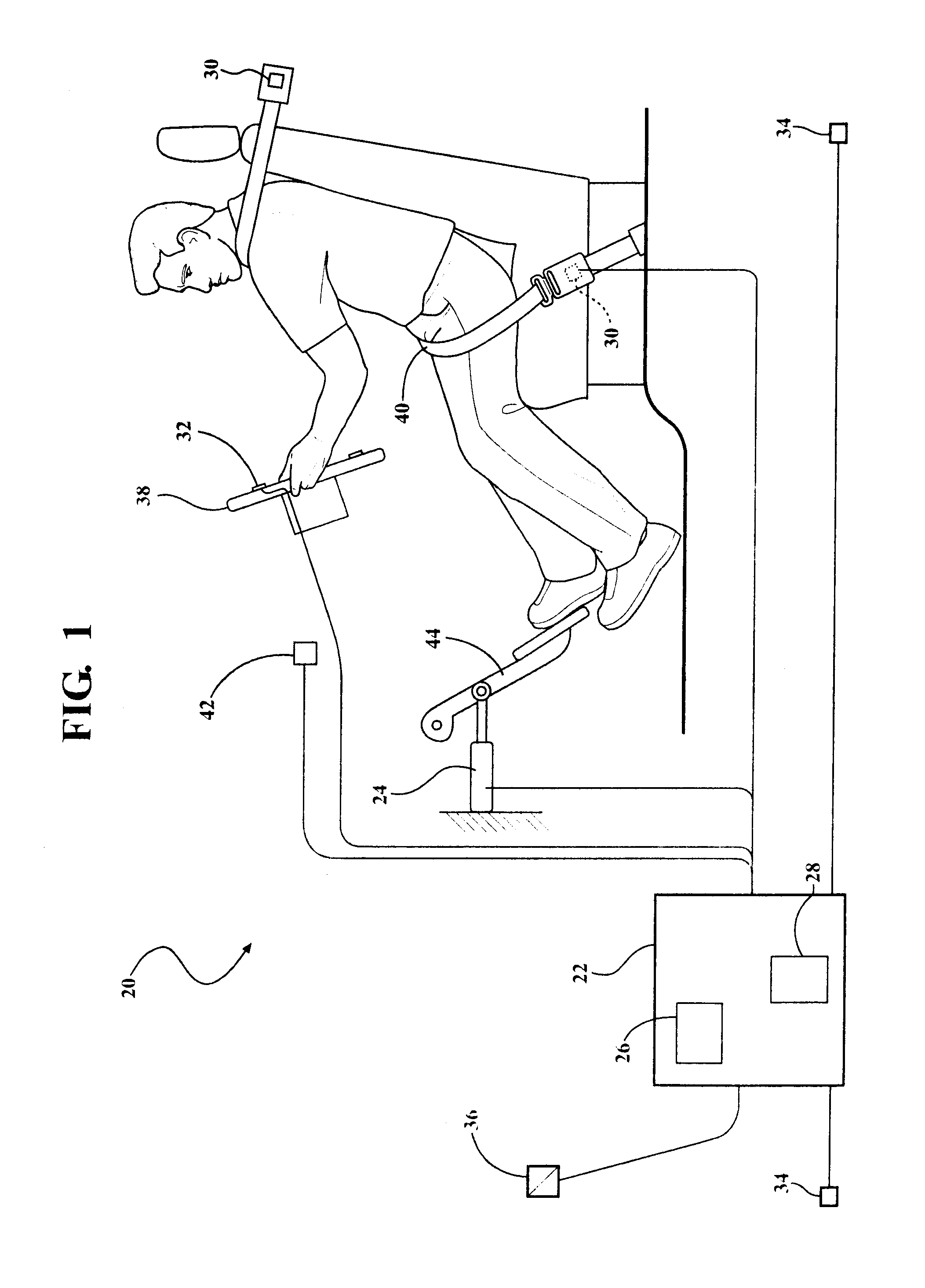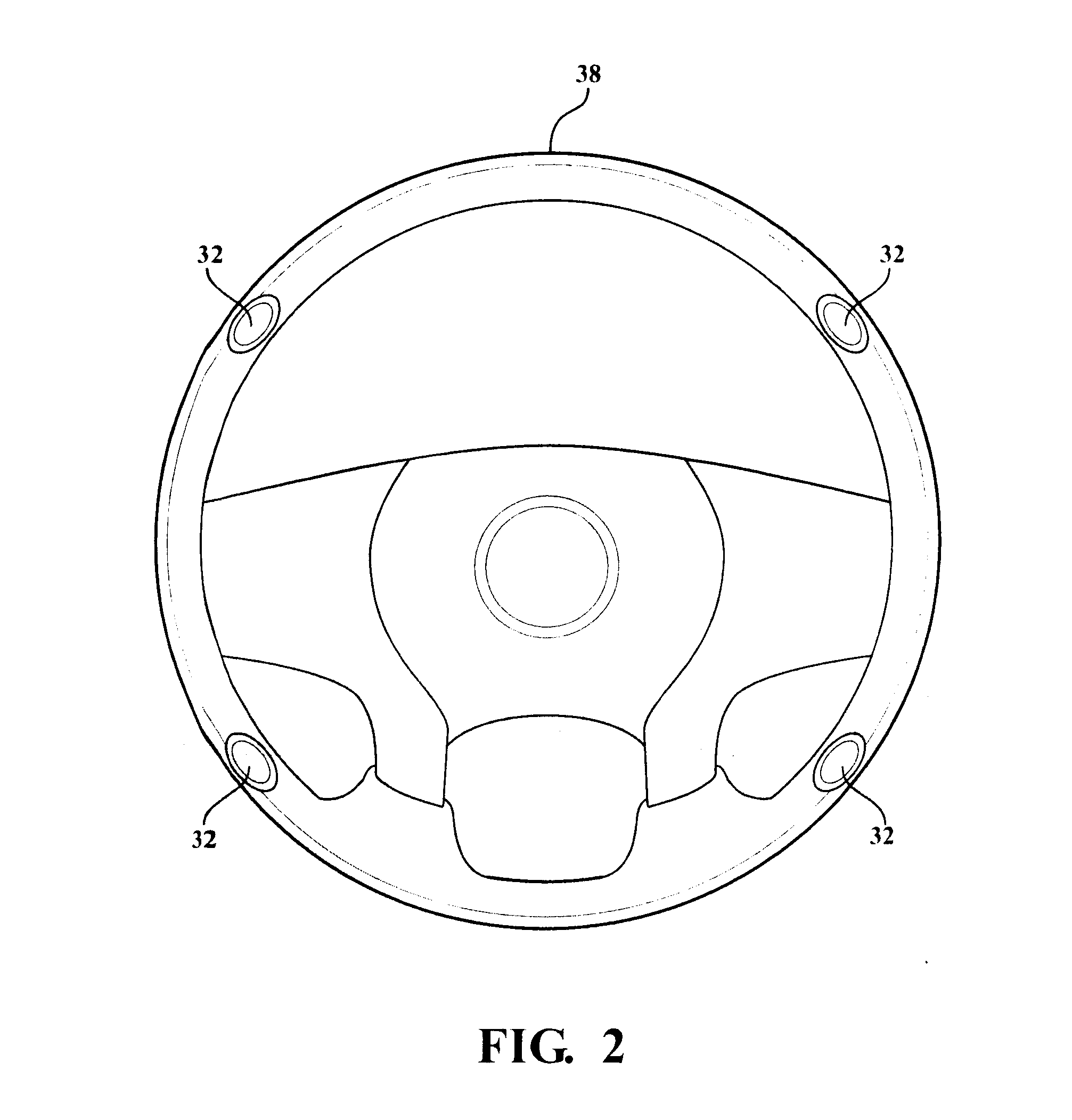Method and system for controlling the behavior of an occupant of a vehicle
a technology for occupants and vehicles, applied in vehicle position/course/altitude control, process and machine control, instruments, etc., can solve the problems of putting the safety of the operator at risk, and the safety of the vehicle operator at risk, so as to improve the acceptance of the applied resistance and improve the safety of the applied resistan
- Summary
- Abstract
- Description
- Claims
- Application Information
AI Technical Summary
Benefits of technology
Problems solved by technology
Method used
Image
Examples
Embodiment Construction
[0017]Referring to the Figures, wherein like numerals indicate like or corresponding parts throughout the several views, a vehicle 20 for use with a method of controlling the behavior of an occupant is shown in FIG. 1. The vehicle 20 could be one that travels across the ground, on tracks, on or under the water, or one that flies. The vehicle 20 is of the type including a control module 22, and a resistive device 24, and a plurality sensors 26, 28, 30, 32, 34 for sensing a plurality of operating conditions, an auxiliary mode of the vehicle 20, as well as a precursory auxiliary mode event. As shown in FIG. 1, the control module 22 is configured to receive signals and data from the plurality of sensors 26, 28, 30, 32, 34 and is also capable of processing the data and producing signals in response to the data according to a program stored on the control module 22 which directs its operation. For example, the control module 22 can include a comparator 36, where data that has been stored ...
PUM
 Login to View More
Login to View More Abstract
Description
Claims
Application Information
 Login to View More
Login to View More - R&D
- Intellectual Property
- Life Sciences
- Materials
- Tech Scout
- Unparalleled Data Quality
- Higher Quality Content
- 60% Fewer Hallucinations
Browse by: Latest US Patents, China's latest patents, Technical Efficacy Thesaurus, Application Domain, Technology Topic, Popular Technical Reports.
© 2025 PatSnap. All rights reserved.Legal|Privacy policy|Modern Slavery Act Transparency Statement|Sitemap|About US| Contact US: help@patsnap.com



